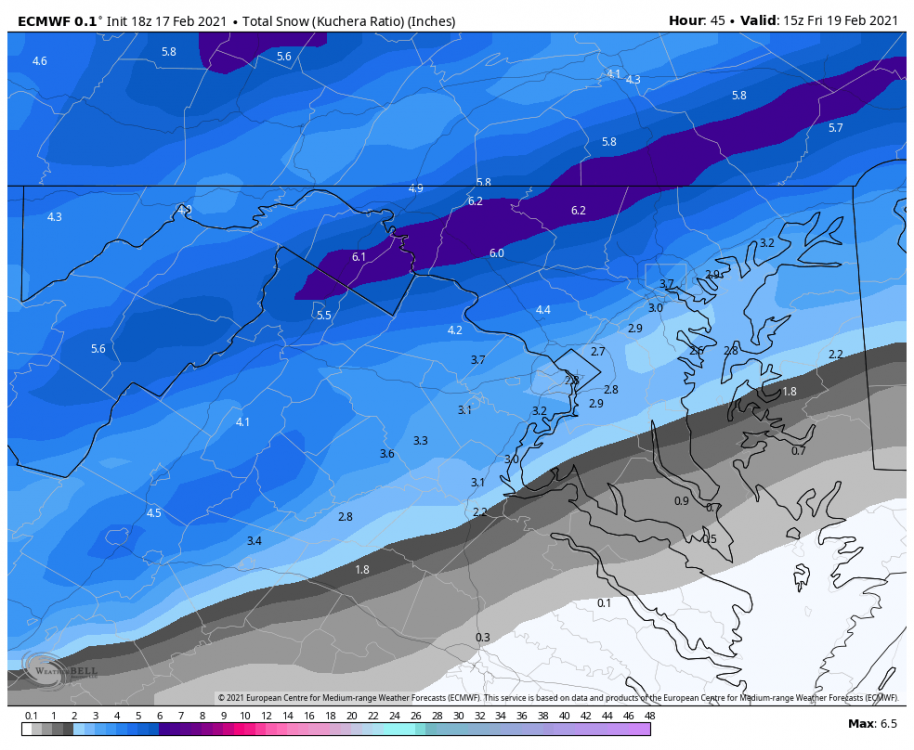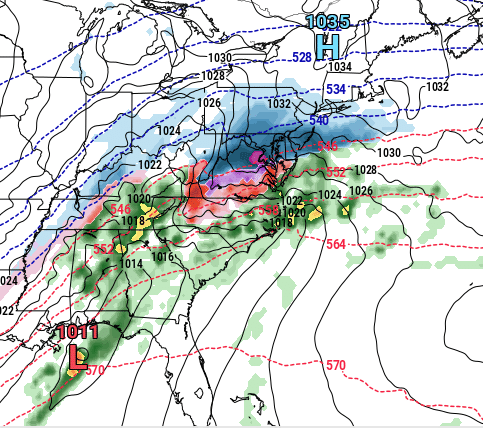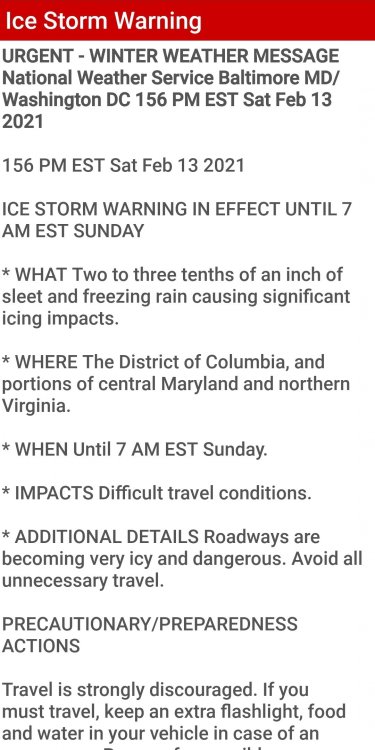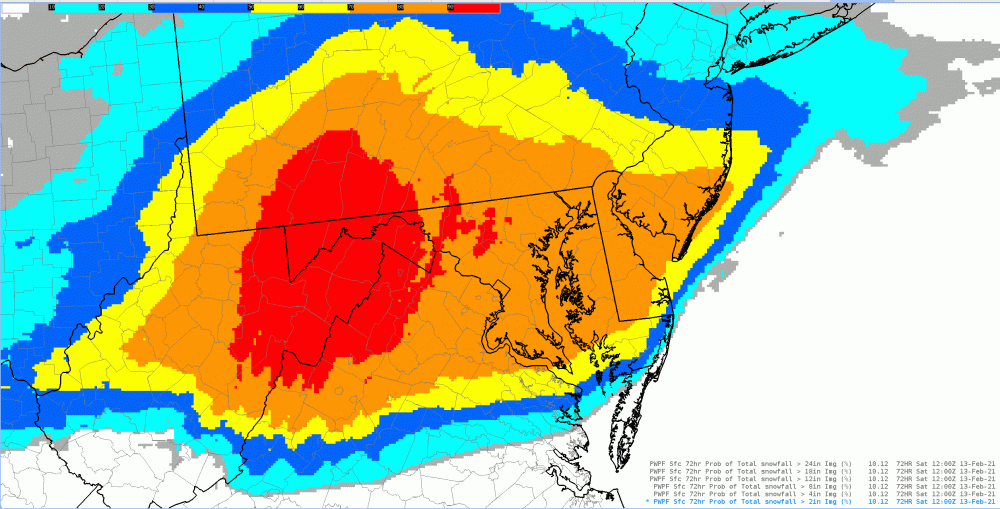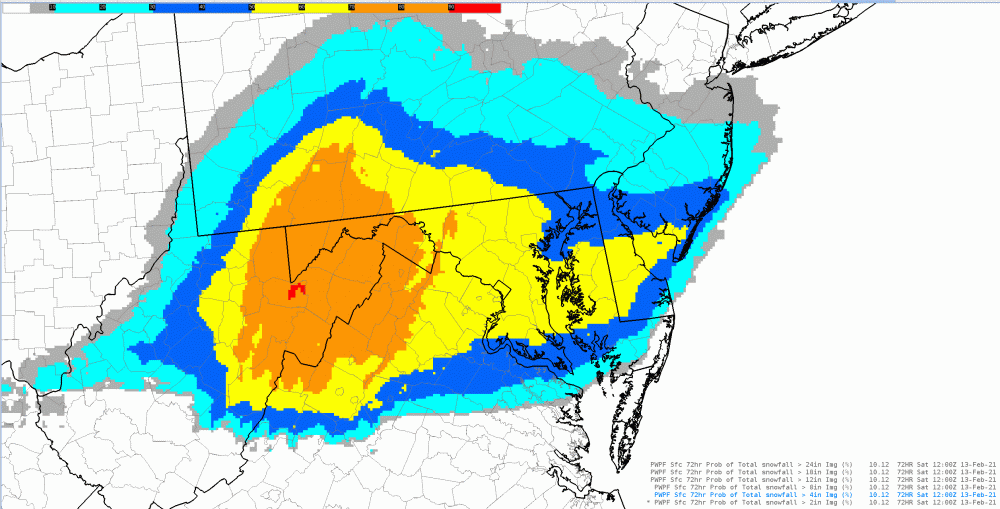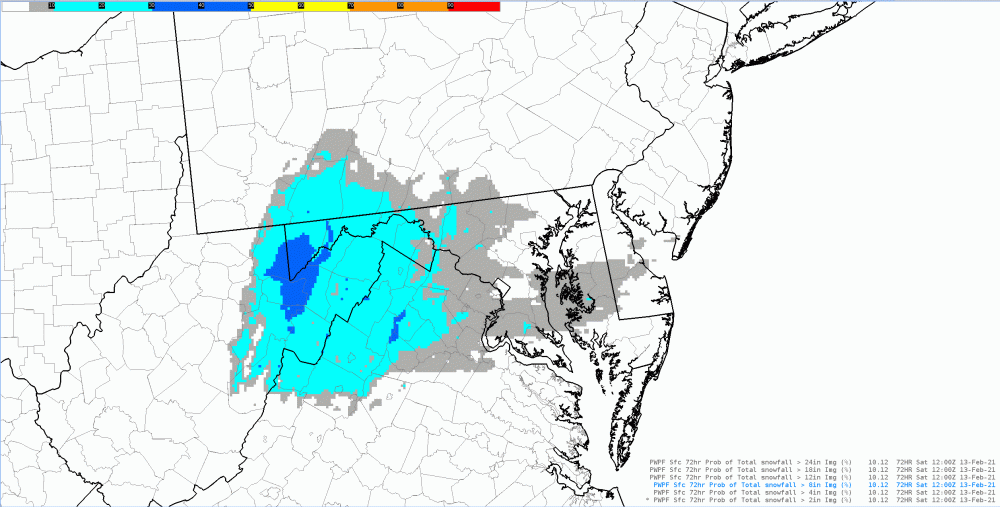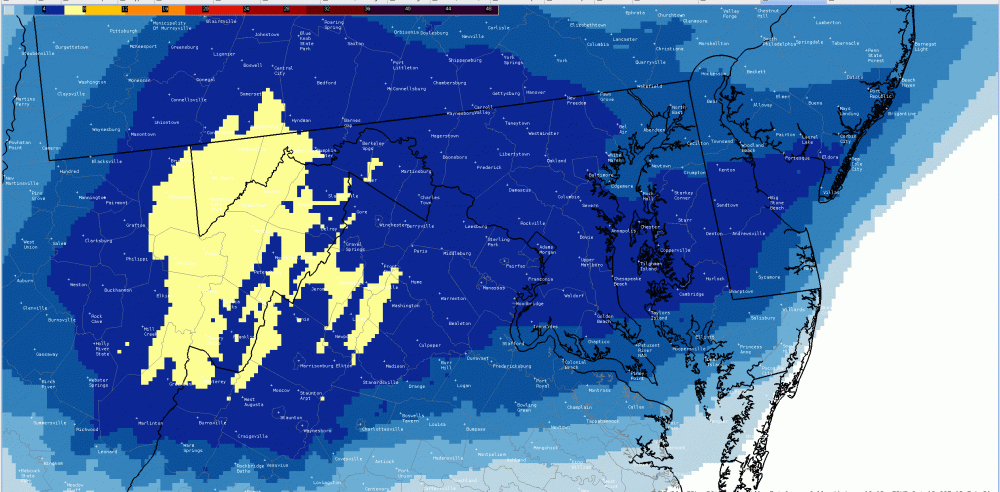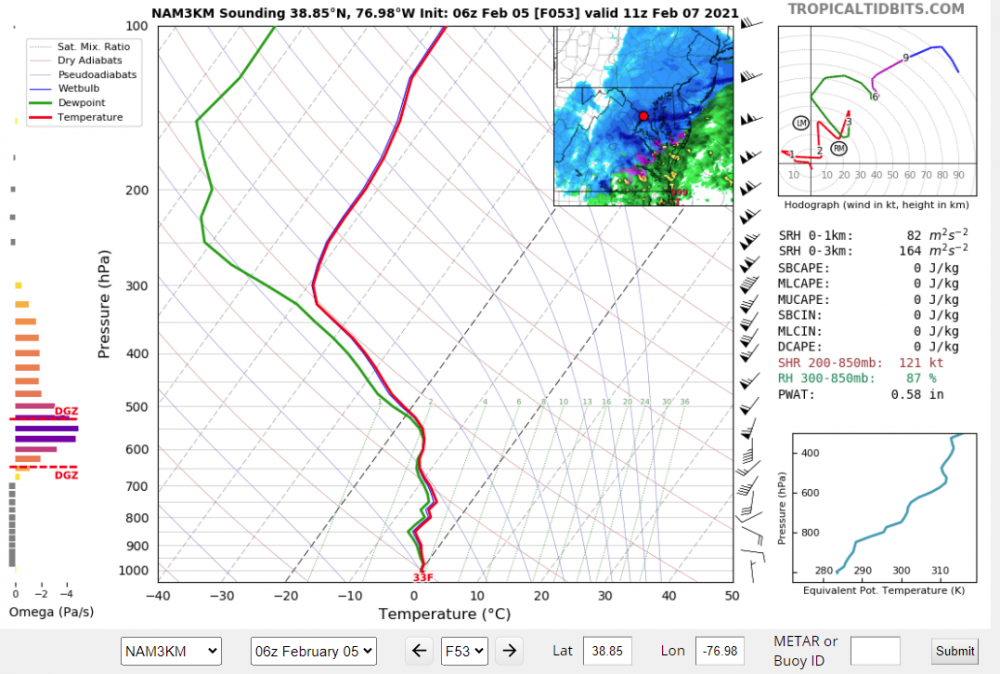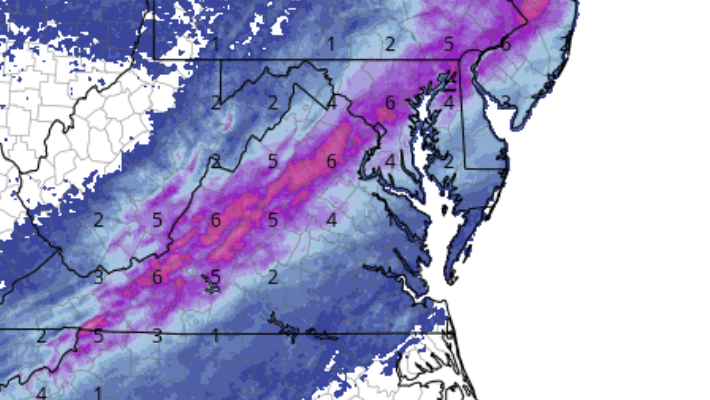-
Posts
765 -
Joined
-
Last visited
Content Type
Profiles
Blogs
Forums
American Weather
Media Demo
Store
Gallery
Everything posted by WxMan1
-
It's okay, I used to live in the area.
-
Come this time tomorrow, I'll either be in the RIC area (preferably west end, which tends to do better climo speaking), or staying right here at home. Either way, with another Niña year, if I have to chase for snow, so be it.
-
Yep! What changed? Convection perhaps?
-
Still showing the DC-Bowie-Crofton-Crownsville-Annapolis-Cape area screwjob I see. I've seen this claw "minima" for the past few days per some of the model runs (multiple models). I get that there's potentially going to be a maxima south with better UVVs and colder 850-750 temps, and of course areas farther N and W will likely begin to mix later. But if this verifies, it will be the second time in less than a month where this minima was ~ route 50. I know that minima has to be somewhere, but geez! You think we were 1,000ft below sea level.
-
Absolutely under. Depends exactly where in the District -- NW DC obviously would have a better shot. But yeah, take the under. Now. If it's snow AND sleet, I'd still probably take the under, but it'd be closer, obviously.
-
Here in the 50 corridor from DC to Annapolis... We get what, 3-4 hours of snow before the flip? Say from 11 to 15Z? Even averaging 1/2"/hr rates (moderate snow), the bar for all snow is 2" here. This is where the NAM3 Ferrier SLR (snow NOT including sleet) is useful. It has 1-2" of snow before the flip. How much sleet after that? Figure a 2-1 ratio (which might be generous), meaning we need 0.50" of liquid to get 1" of sleet. Just can't see this area getting more than 0.50 to <1.0" of sleet based on the projected QPF after 14-15Z.
-
I was noting earlier that the low track this go around is more of a hybrid Miller A/B, so at least this time we shouldn't have to worry (as much) about transfer issues or a rapidly impinging dry slot. Hoping this time we'll see a prolonged period of fatty flakes before the flip. While during the prolonged snow/sleet/freezing rain/back to snow event the other week I ended up with 4.0" of storm total snow, for the winter thus far I still have yet to see more than 2.5" before ending or mixing. So 3-4" is my bar. If we can get more than that from DC and areas along 50 east to the Cape, and add on a little glaciation with some sleet and freezing rain, I'll be happy.
-
Well, in terms of storm type, it's probably closer to a hybrid Miller A than a B, at least with respect to the surface reflection. Doesn't look like we'd have the transfer issues a B-type storm would have (and has given us) this year...so I can certainly see why the guidance trends would be more bullish in terms of the upper-bound or "boom" totals. I do see enough pieces of guidance (including the 18Z para GFS) that shows that "claw" configuration some of you were referring to (later changeover = heavier snow N/NW of DC, better initial FGEN/QPF and front-end thump = heaver snow S/SE of DC) -- which would leave the 50 corridor from DC to Annapolis (MBY) in a relative min. Still -- I have yet to experience a snowfall this year that yielded more than 2.5" before dry slotting or changing to sleet or freezing rain. So, my bar is 4-6", which I would most assuredly take along with any glaciation of sleet and freezing rain that follows.
-
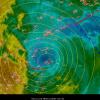
Feb Long Range Discussion (Day 3 and beyond) - MERGED
WxMan1 replied to WinterWxLuvr's topic in Mid Atlantic
Preface -- this is NOT a criticism or meant to be banter... When would we normally start a storm thread for Feb 18th? Would we wait until this upcoming (Tuesday) system is done? -
Well, better late than never for us here in AA. 28/25 with sleet and freezing rain here in Crofton. Big ? will be how much accretion from FZDZ do we see tonight after the precip shuts off?
-
As many of us hinted last night... Not a surprise at all. We have so many events, including the 3/16" of ice here with the last event after 2.5" of snow, where we get a glaze that sneaks up on us. There were far more glaring model signals going into this event however, including a steadfast ECMWF, that were screaming ISW.
-
Freezing rain here in Crofton, 28°/23°. As I mentioned yesterday, the forecast *still* has us getting to 37°F tomorrow. With no horizontal temperature advection and a bolstered in-situ CAD setup with all that sleet and ice to melt (diabatic cooling), I have no idea when we'll hit the freezing mark again. Monday perhaps?
-
We have a thread titled February 13, 2021 Ice Storm. I would be stoked if our FZRA or FDDZ threat didn't extend into Sunday or even Monday, at least for some areas away from the cities.
-
With apologies to sounding banter-ish... Current temp forecast for the greater beltway region have temperatures climbing above freezing Sunday into Sunday night and Monday. With all the potential sleet and ice laying around, along with the lack of any advection whatsoever at the surface, and all of that latent cooling due to melting of ice... how on Earth are temperatures going to get above freezing during this time, at least for many areas away from the city? In-situ CAD is a real thing; we've observed it on countless occasions, and yet the guidance (once again) suggests surface temperatures will climb above freezing sooner than later. Falling for that scenario would be like believing that Lucy will not pull the football away this time around when Charlie Brown tries to kick it. Someone take me off the ledge at convince me that the Sunday night to Monday wave isn't additional light freezing rain or drizzle.
-
Nice aggregate flakes here in Crofton, 34F.
-
00Z ECMWF, like others, are clustering along the 50 corridor for us easterners along/east of the District. Anyway, hot off the presses: The latest 72hr probabilities from WPC (2", 4", and 8"), along with the 50/50 or "most likely" amount. Guidance is really clustering in on a 3-5/4-6" type scenario for most of us with both waves (still feel the bulk for most of us along/north of U.S. 50 will see the bulk in wave #1). Notice how the probs of >2" and >4" in the 3-day period are pretty high, then drop precipitously with the >8" probs -- indicative of a moderate event with probably "meh" rates over (hopefully) a longer duration, as lift in the DGZ remains lackluster.
-
TT https://www.tropicaltidbits.com/analysis/models/?model=gem®ion=neus&pkg=mslp_pcpn_frzn&runtime=2021021000&fh=60
-
Yeah, I meant to say 2013, my bad! All snow now in Crofton, 34F. Big, aggregate, clumping flakes. At least not the wet mangled variety we had earlier. Diabatic cooling effects due to both evaporation and melting happening right in front of our eyes. So very cool to observe.
-
Still a snow and rain mix here in Crofton, 35°F. Evoking lots of memories of Snowquester here (March 6, 2012). Without the cold antecedent airmass, those that will do well (better) are our friends over higher elevations and/or under FGEN, perhaps convective banding. Otherwise, meh.
-
39/21 in Crofton. Outside of the dewpoints (which are lower), this antecedent airmass feels very March-like, especially with high around 50F Sunday. I was getting PTSD vibes right before "Snowquester", or the March 6, 2013 event, but then realized that our dewpoints (and thus wet bulbs) are lower. Of course, that was a much bigger system, Miller B, with the transfer and lack of FGEN over the DC-Balt corridor really hampering our rates and (thus) accums.
-
This is something to watch. There's definitely a March-ish look to this system. Some potential instability aloft, real good 850-700 FGEN as well. Translation: Good chance for banding. Usually the northern (heavier snow) axis is where there's better/deeper lift in the DGZ, while the southern axis aligns with some lower FGEN along with some better elevated instability potential. So what happens "in between", which would be the immediate DC metro as implied from the current UKMet and GFS? Just like any other weather scenario where there's weak symmetric stability or some (weak) instability: areas in between bands will see relative subsidence in layers (weaker UVVs overall), which kills the rates. When your boundary layer temps are marginal (33/31 at the surface for example), rates are EVERYTHING.
-
NAM Nest = NAM CONUS-Nested version, or 3km. It's the NAM's CAM.
-
11Z Sunday over the District per the 06Z 3km NAM. Nice lift in the DGZ. If it comes to fruition, we would see MUCH better dendrites than we saw last Sunday. Thus much better (faster) accumulation efficiency. Like 4+ inches within 12 hours instead of having to wait 24-36 hours (lol).
-
06Z NAM Nest for Sat night-Sunday. Definitely juicy. This is with the Ferrier rime correction (capped at 10-1). If it's all snow w/o rimed flakes and a >10-1 SLR, we would get more. The NAM Nest Ferrier snow maps did a pretty good job in the DC area for the WAA phase in the last event (on Sunday).
-

Jan 31st - 33rd Storm Obs and Disco like it's 1979
WxMan1 replied to Bob Chill's topic in Mid Atlantic
Good size aggregate flakes here in Crofton (AA County), though I fear such is a prelude to a mix coming soon from the SW (which the CC would imply).




